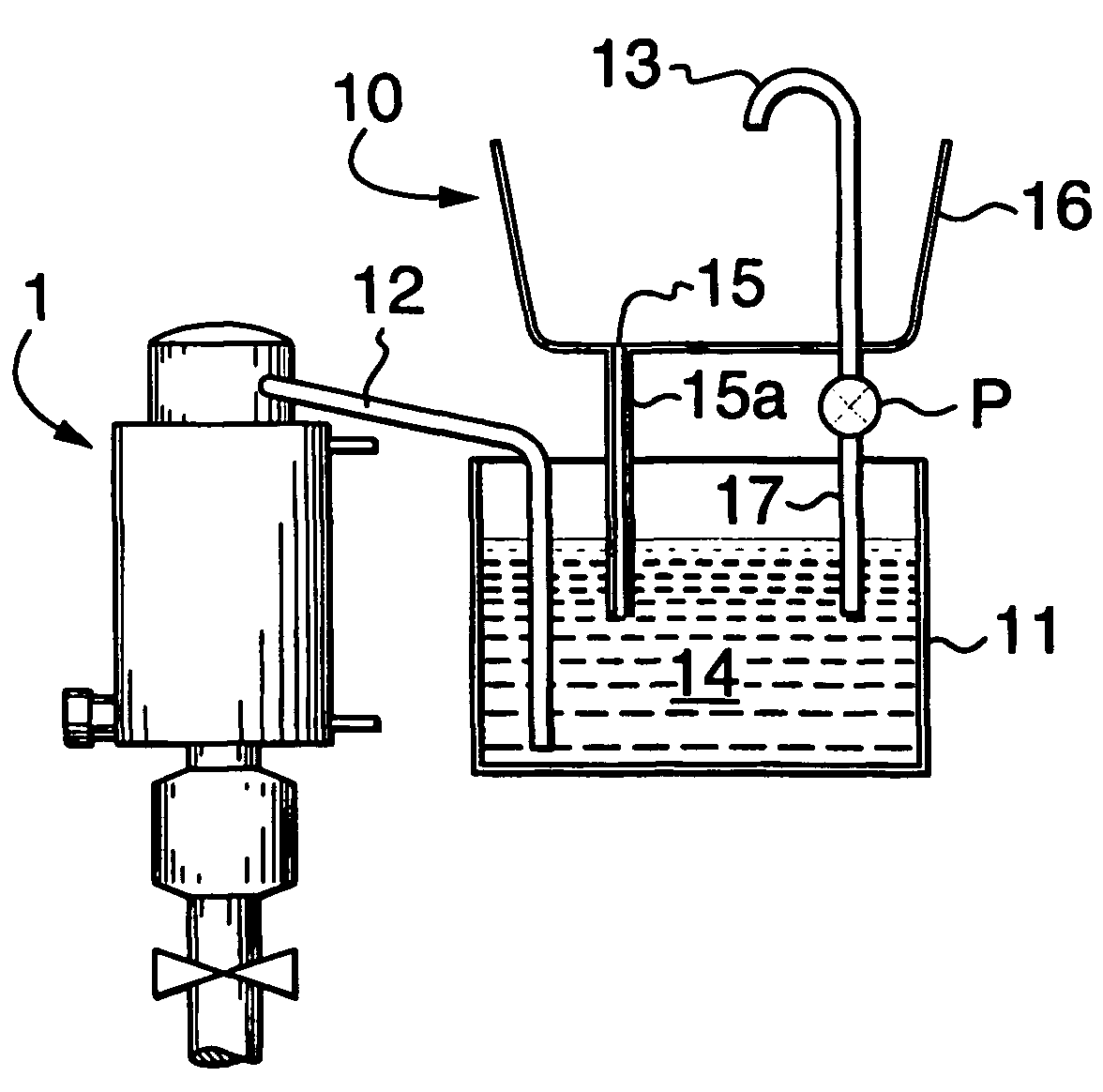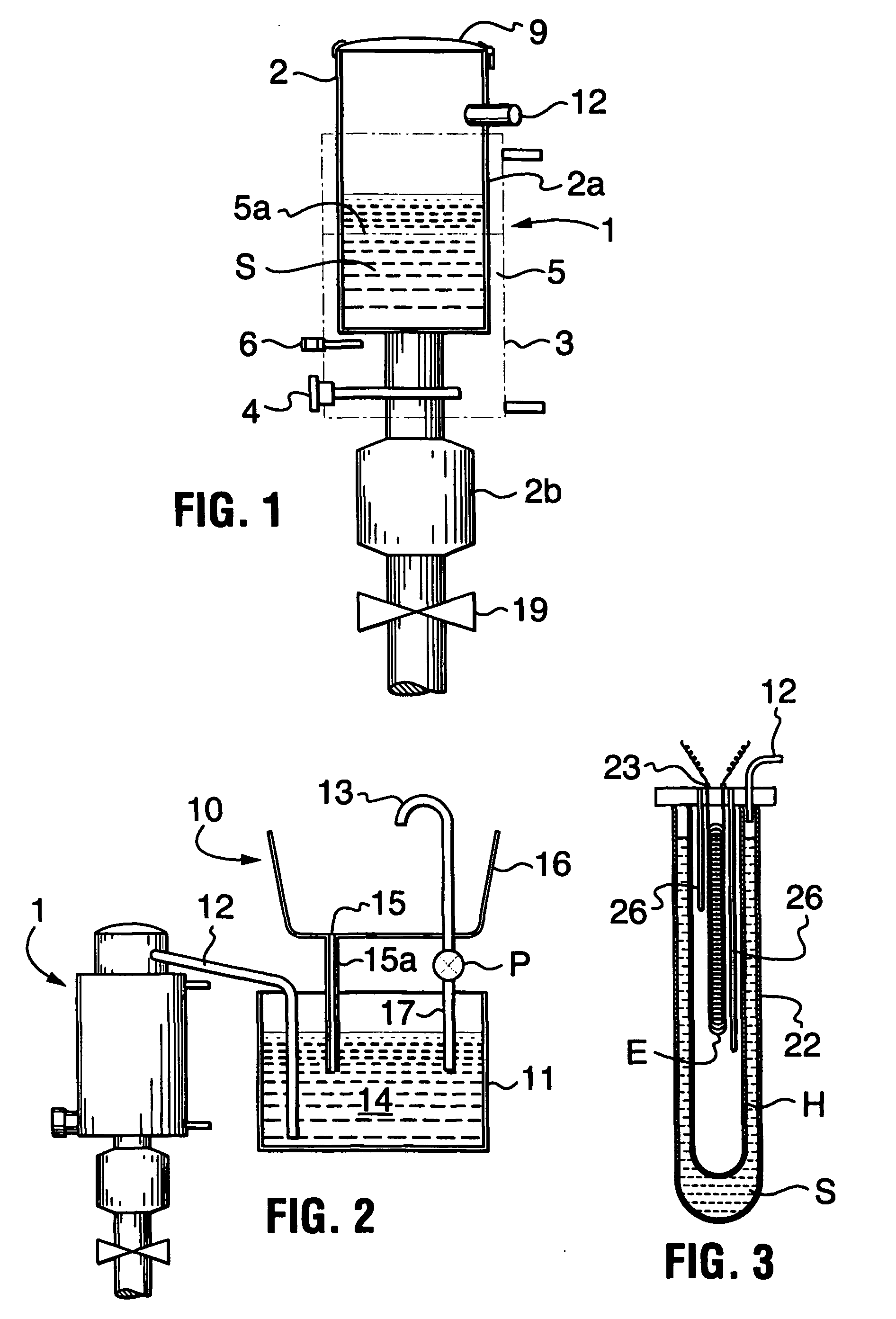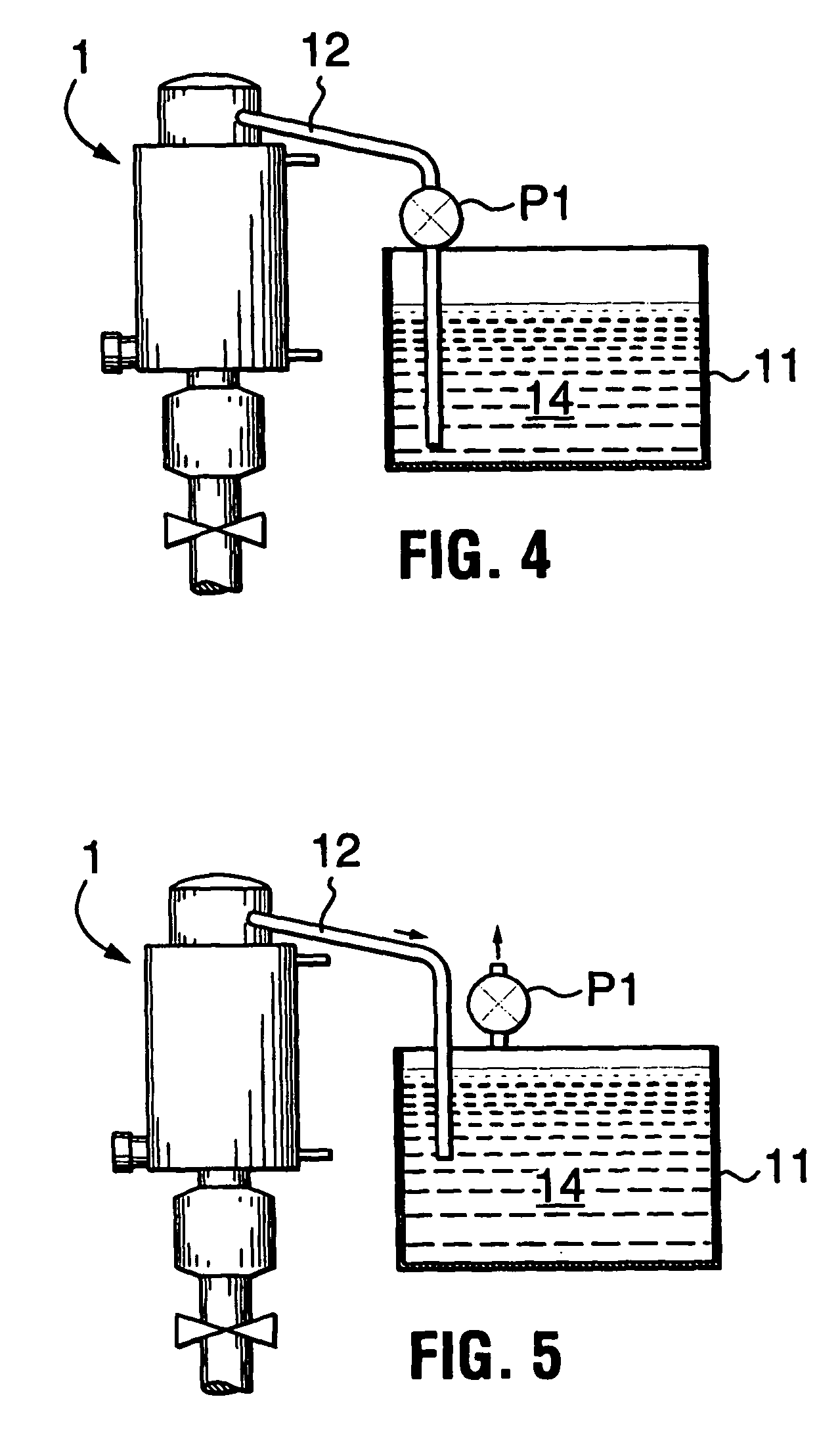Contaminated solvent recycling system
a solvent recycling and solvent technology, applied in the direction of distillation separation, water/sludge/sewage treatment, evaporator/condenser, etc., can solve the problem of less service over a longer period of time, and achieve the effect of large operations, low cost and energy saving
- Summary
- Abstract
- Description
- Claims
- Application Information
AI Technical Summary
Benefits of technology
Problems solved by technology
Method used
Image
Examples
Embodiment Construction
[0011]FIG. 1 shows schematically a distillation unit [1] in accordance with one embodiment of the invention, comprising a distillation vessel [2] having its upper region located in a heating jacket [3], contaminated solvent or a mixture of solvents [S] to be recovered being heated in a distillation region [2a] of the distillation vessel [2] adjacent the heating jacket [3] to generate solvent vapour. This solvent vapour then exits through a conduit [12] wherein it is condensed.
[0012]The upper part [2a] of the distillation vessel [2] sits within the heating jacket [3] containing an oil bath [5]. The heating jacket [3] is provided with one or more heating elements [4] immersed in the oil and, in operation, each heating element [4] heats the oil [5], which in turn heats the distillation zone formed in the upper part of the distillation vessel [2] at least until the solvent [S] within the distillation zone reaches its boiling point and vapour is generated. The distillation vessel [2] is ...
PUM
| Property | Measurement | Unit |
|---|---|---|
| mass | aaaaa | aaaaa |
| internal pressure | aaaaa | aaaaa |
| pressure | aaaaa | aaaaa |
Abstract
Description
Claims
Application Information
 Login to View More
Login to View More - R&D
- Intellectual Property
- Life Sciences
- Materials
- Tech Scout
- Unparalleled Data Quality
- Higher Quality Content
- 60% Fewer Hallucinations
Browse by: Latest US Patents, China's latest patents, Technical Efficacy Thesaurus, Application Domain, Technology Topic, Popular Technical Reports.
© 2025 PatSnap. All rights reserved.Legal|Privacy policy|Modern Slavery Act Transparency Statement|Sitemap|About US| Contact US: help@patsnap.com



